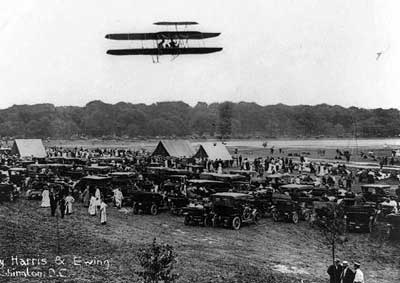|
The Early Years covers the history of flight from the earliest aviation legends through the beginning of World War I.
In Greek myth the great inventor Daedalus and his son, Icarus, escaped from imprisonment on the island of Crete by making wings of feathers held together with wax. The flight was successful until Icarus, ignoring his father's warning, flew too high and too close to the sun. Man's fascination at watching birds take flight and his desire to join them started before Icarus and continued throughout history.
Man began to make more progress toward flight in 1670 when Francesco Lana de Terzi, an Italian Jesuit, proposed one of the first lighter-than-air vehicles. Then a century later the brothers Joseph and Etienne Montgolfier applied the same principles to create the first hot air balloon.
As exciting as the discovery of lighter-than-air flight was, it didn't seem to offer the speed or maneuverability that man envied so much in birds. Early designers were hampered by the lack of a way to power their machines.
Finally as the 20th century dawned, men all over the world worked endless hours on their dreams hoping to be the first to succeed in building a powered flying machine.
We are pleased to salute those “daring young men in their flying machines.”

Fort Myers, Virginia 1909
In 1909, the Wright Brothers sold the first airplane to the U.S. Army. The contract included training pilots. In the beginning, the primary role of the airplane in wartime was for observation. Before 1915, when Orville (Wilbur died in 1912) left the Wright Company, the company had sold a total of fourteen airplanes to the Army.
Go to the Wright Brothers exhibit
|